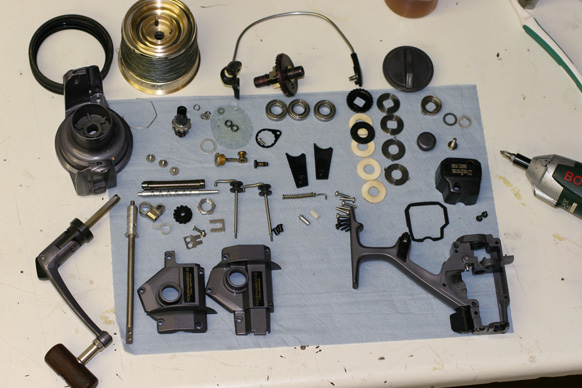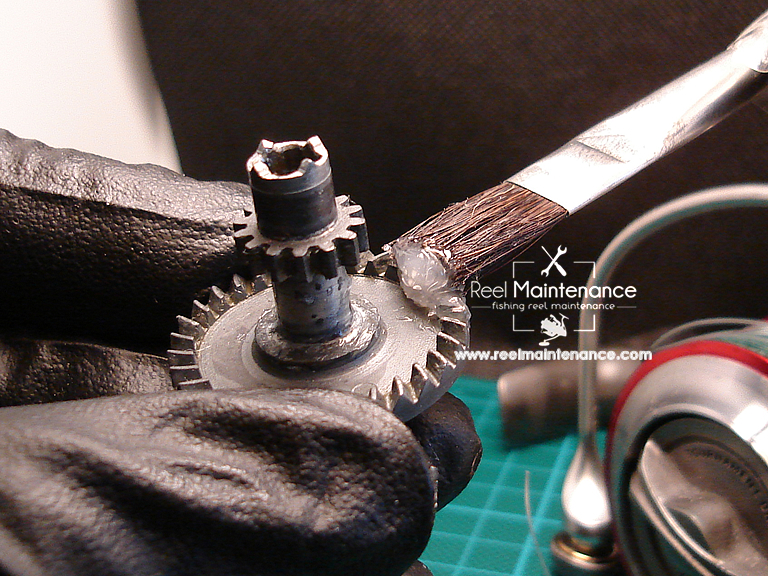Your fishing reel, like any other modern piece of equipment, is made up of a number of intricate parts that must all work in harmony to function properly. In order for all of these parts to function properly, the fishing reel’s owner must be meticulous in his or her tool maintenance. While this not only ensures a longer service life for the reel, it also contributes to the overall performance of the fishing apparatus. The investment of time and knowledge into the upkeep of a fishing reel will pay dividends for many seasons of fishing enjoyment.

When and how often to do reel maintenance:
The frequency with which you use your fishing reel, as well as the fishing technique you employ, are critical factors in determining how frequently reel maintenance should be performed. Some experts believe that winter is an excellent time to perform routine maintenance because doing serious fish tackling chores during that time will not cause you to feel as though you are missing out on some exciting fishing opportunities. Others recommend performing second-level or more comprehensive maintenance at least twice per fishing season, if not more frequently. Cleansing the ball bearing will be necessary in this case.
First, take the reel off the rod completely
It is essential that you completely detach the reel from the rod before beginning any work in order to make the job easier and to keep the reel seat in good condition. It will assist you in determining whether or not saltwater has entered the reel seat so that you can deal with it as soon as possible before the water corrodes the seat.
Prepare the proper tools and cleaning supplies before attempting to do any disassembly.
For this project, you will need two small screwdrivers: one with a Phillips head and one with a flat head. Additionally, keep an old toothbrush and a pair of tweezers on hand, as well as a nut driver or wrench that is appropriate for the size of the reel’s screw nuts.
A pan of hot water, as well as reel oil or lubricant, lighter fluid, and a basic cleaning compound will be required for the cleaning supplies. a pan of hot water It is critical that you have the detailed design of the reel with you or a parts list to refer to so that you are completely aware of the specifications of the fishing reel in order to complete the maintenance task without difficulty. When it comes to disassembly, you have to screw in rather than screw out.
Other items that must be kept on hand during reel maintenance include cotton swabs, isopropyl rubbing alcohol, gear grease, shop or paper towels, and an empty egg carton to keep all of the components together.

Carefully disassemble the fishing reel.
Make a neat layout for your parts in the egg carton slots, labeling them with a strip of masking tape and numbering each one as they are removed from the reel. This makes reassembly more effortless and less confusing, and it also reduces the likelihood of forgetting to put any element back in its proper place.
When working on the fishing reel, it’s important to remember that all of the parts are designed with metal to fiber connections rather than metal to metal.
Be sure to hold the fishing reel properly during disassembly and reassembly.
Holding the reel in your left hand and working with your right hand will help you maintain your orientation while completing the task at hand. Keep in mind to always hold the tool in the same position to ensure that the parts can be assembled with the least amount of difficulty.
Remove the spool.
Keep in mind that the fishing line must be secured or removed from the fishing reel before you can remove the spool from the fishing reel. In this way, the line will not become entangled between the frame and the spool, which can make detaching extremely difficult.
Once this is accomplished, remove the spool and use cotton swabs and isopropyl rubbing alcohol to clean off any visible debris and dirt from the exterior of the reel. Remove the spool shaft and clean it. Damage, corrosion, and rust should all be looked out for. Remove dirt, debris, and old grease from surfaces to ensure that they are resistant to wear and tear.
Grease the parts.
Allow the parts to air dry completely before applying the grease. All of the components of the fishing reel should be lubricated or greased before use. It is not recommended to use household oil, automobile grease and oil, or motorcycle grease and oil because they may be too strong and have a tendency to harden or thicken much more quickly than molecular or reel oil, resulting in a layer of crud on the parts. Grease must be applied to the parts that wear out more quickly, such as the gears and ball bearings. It is necessary to lubricate the pick-up handle, the anti-reverse handle, and the handle itself with oil. It is important not to use too much lubricant or oil in order to avoid the accumulation of dust. It only takes a few drops to make a difference. Grease the gears that are located in the front of the spiral worm gear, as well as the worm gear itself and any sliding parts that may be present.
Avoid spraying the internal components of the reel with gasoline or a strong chemical solvent to avoid damaging the plastic parts or pushing the crud further into the inner chambers of the reel’s internal chambers.

Reassemble the reel.
Install the nuts and screws into the fishing reel with care, making sure to put them back in their proper positions before tightening them down. WD-40 should be sprayed on the outside of the reel and then cleaned with a soft cloth.
Before re-mounting the reel, spray the seat with an anti-corrosion agent to prevent corrosion.